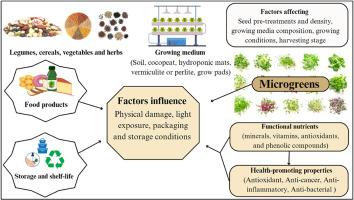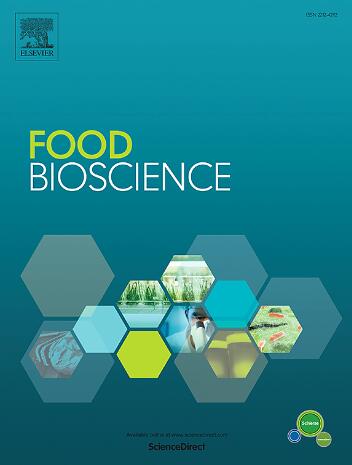微型蔬菜:栽培方法、生物活性潜力、健康益处以及将其用作增值食品的机会
IF 4.8
1区 农林科学
Q1 FOOD SCIENCE & TECHNOLOGY
引用次数: 0
摘要
近年来,人们的饮食模式发生了变化,对新鲜食品、即食食品、功能食品和营养保健品的偏好也在增加。微绿色蔬菜(嫩蔬菜)是一种相对较新的产品形式,受到人们的欢迎,也被称为 "蔬菜彩纸"。它可用于改善沙拉和主菜等食品的感官特征,即外观和风味。与种子和成熟的同类蔬菜相比,微型蔬菜含有更多的功能性营养素(矿物质、维生素、抗氧化剂和酚类化合物)。本综述简要介绍了用于栽培微型产品的不同系列的微型蔬果,并重点介绍了它们对健康有促进作用的生物活性化合物,如抗氧化剂、酚类化合物、色素、矿物质和维生素,这些物质与实现良好健康和福利的可持续发展目标密切相关。除了这些影响微型蔬菜种植的重要因素(如品种、类型、生长介质、营养素的使用、生物强化和先进光照系统的使用)外,还讨论了影响微型蔬菜的采收前和采收后因素。本文章由计算机程序翻译,如有差异,请以英文原文为准。

Microgreens: Cultivation practices, bioactive potential, health benefits, and opportunities for its utilization as value-added food
In recent years, changes in diet patterns and preferences for fresh food commodities, ready-to-eat food products, functional foods, and nutraceuticals have increased. Microgreens (young vegetable greens) are a relatively new form of product that has gained popularity and is also referred to as ‘vegetable confetti’. It is used to improve the sensorial characteristics, viz. appearance and flavor of foods such as salads and main dishes. Compared with seeds and their mature counterparts, microgreens contain greater levels of functional nutrients (minerals, vitamins, antioxidants, and phenolic compounds). This comprehensive review briefly describes the different families of microgreens used for the cultivation of microscale products and highlights their health-promoting bioactive compounds, such as antioxidants, phenolics, pigments, minerals, and vitamins, which are critically associated with the sustainable developmental goals of good health and welfare. In addition to these important factors affecting the cultivation of microgreens, such as their species, type, growth medium, use of nutrients, biofortification, and use of advanced illumination systems, preharvest and postharvest factors affecting microgreens are also addressed.
求助全文
通过发布文献求助,成功后即可免费获取论文全文。
去求助
来源期刊

Food Bioscience
Biochemistry, Genetics and Molecular Biology-Biochemistry
CiteScore
6.40
自引率
5.80%
发文量
671
审稿时长
27 days
期刊介绍:
Food Bioscience is a peer-reviewed journal that aims to provide a forum for recent developments in the field of bio-related food research. The journal focuses on both fundamental and applied research worldwide, with special attention to ethnic and cultural aspects of food bioresearch.
 求助内容:
求助内容: 应助结果提醒方式:
应助结果提醒方式:


